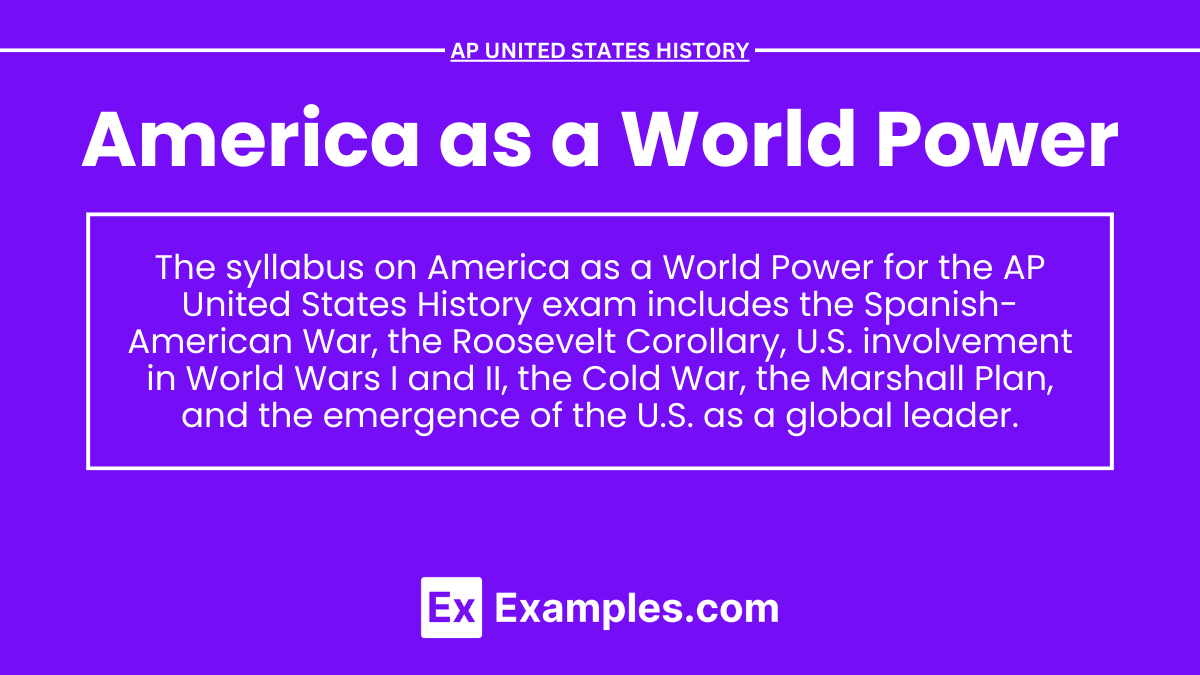In AP United States History, the topic of America as a World Power examines the transformation of the United States from a relatively isolationist nation to a dominant global leader. This shift began in the late 19th century, with events like the Spanish-American War, and continued through the 20th century, including the World Wars and the Cold War. The U.S.’s military, economic, and diplomatic influence expanded, shaping international relations and solidifying its role as a key player in global affairs.
Learning Objectives
In AP United States History, you will be expected to understand the key events and policies that contributed to the United States’ emergence as a world power, including the Spanish-American War, the Roosevelt Corollary, and involvement in the World Wars. The impact of U.S. foreign policy decisions during the Cold War and the post-Cold War era will be analyzed. Additionally, you will examine how these developments influenced America’s global leadership and its role in shaping international relations.
Key Developments
Spanish-American War (1898)
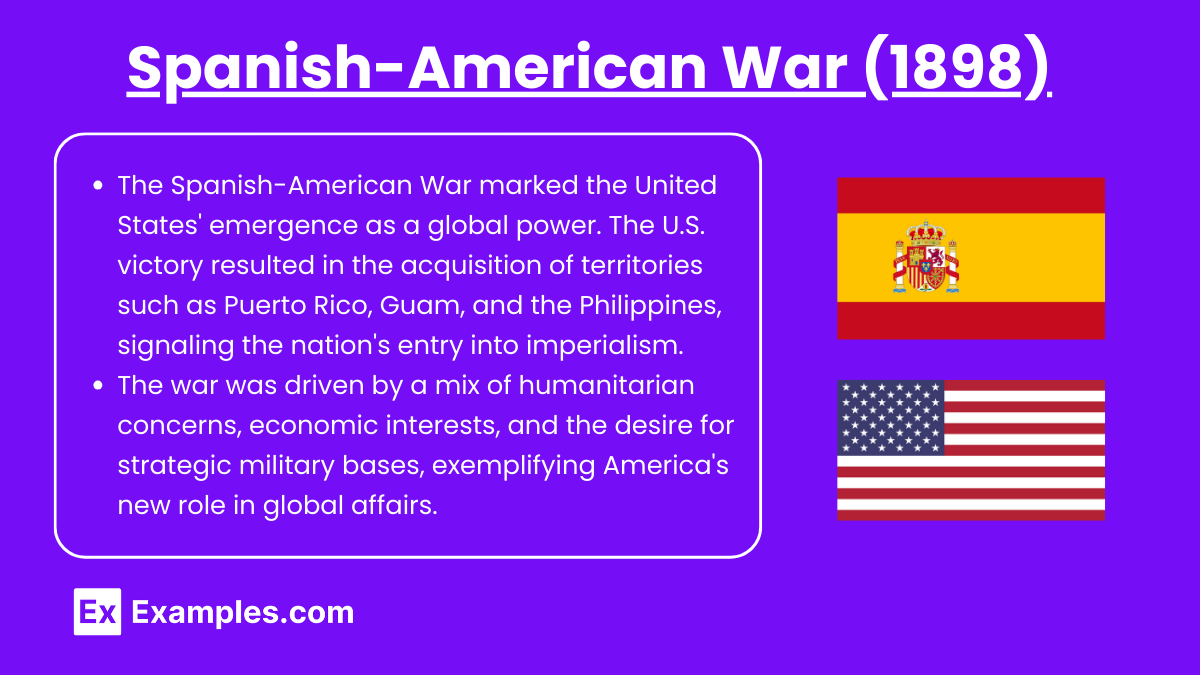
- The Spanish-American War marked the United States’ emergence as a global power. The U.S. victory resulted in the acquisition of territories such as Puerto Rico, Guam, and the Philippines, signaling the nation’s entry into imperialism.
- The war was driven by a mix of humanitarian concerns, economic interests, and the desire for strategic military bases, exemplifying America’s new role in global affairs.
Roosevelt Corollary to the Monroe Doctrine (1904)
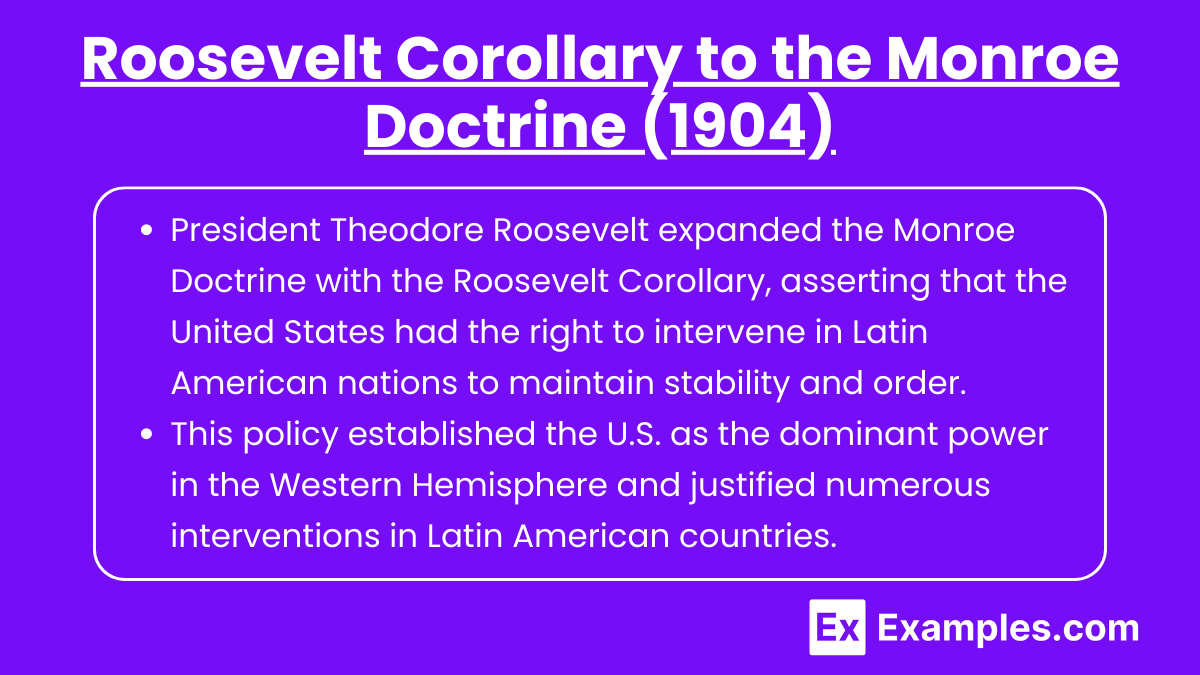
- President Theodore Roosevelt expanded the Monroe Doctrine with the Roosevelt Corollary, asserting that the United States had the right to intervene in Latin American nations to maintain stability and order.
- This policy established the U.S. as the dominant power in the Western Hemisphere and justified numerous interventions in Latin American countries.
World War I (1914-1918)
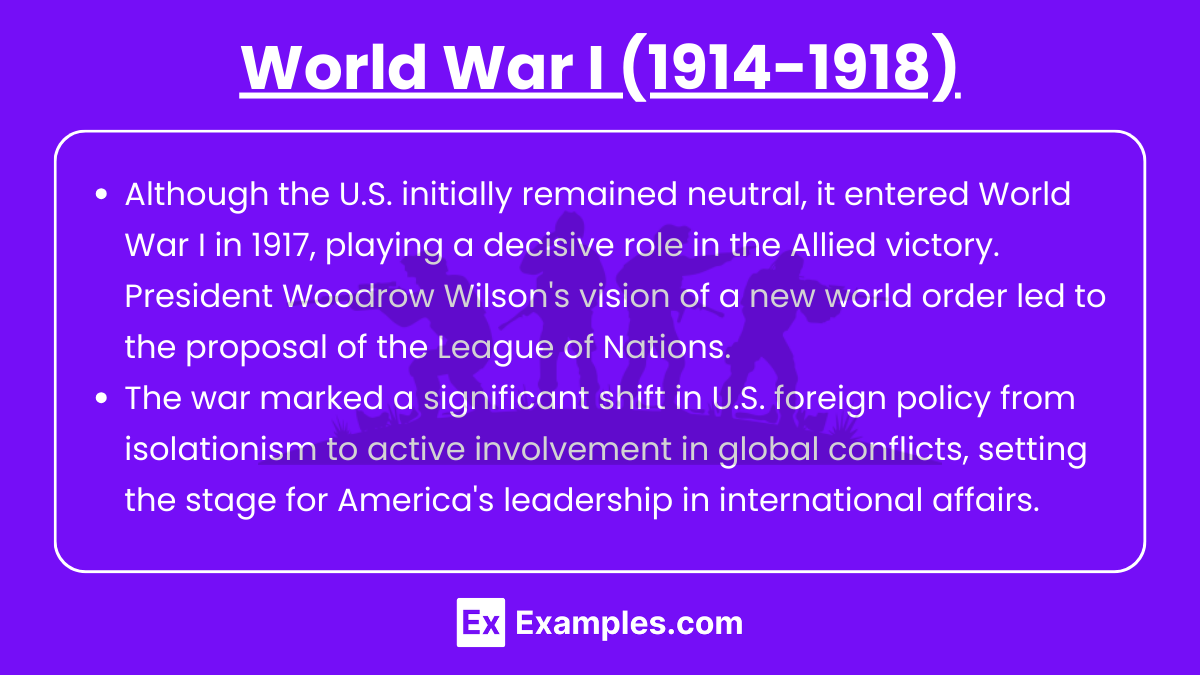
- Although the U.S. initially remained neutral, it entered World War I in 1917, playing a decisive role in the Allied victory. President Woodrow Wilson’s vision of a new world order led to the proposal of the League of Nations.
- The war marked a significant shift in U.S. foreign policy from isolationism to active involvement in global conflicts, setting the stage for America’s leadership in international affairs.
World War II (1939-1945)
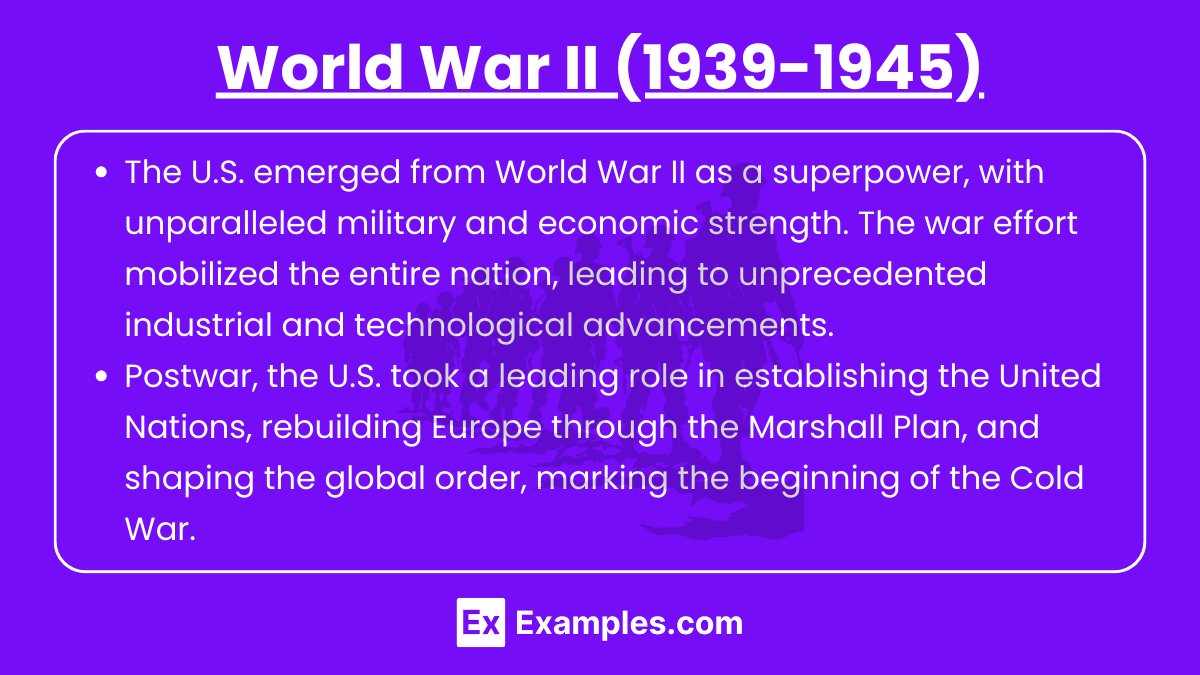
- The U.S. emerged from World War II as a superpower, with unparalleled military and economic strength. The war effort mobilized the entire nation, leading to unprecedented industrial and technological advancements.
- Postwar, the U.S. took a leading role in establishing the United Nations, rebuilding Europe through the Marshall Plan, and shaping the global order, marking the beginning of the Cold War.
Cold War (1947-1991)
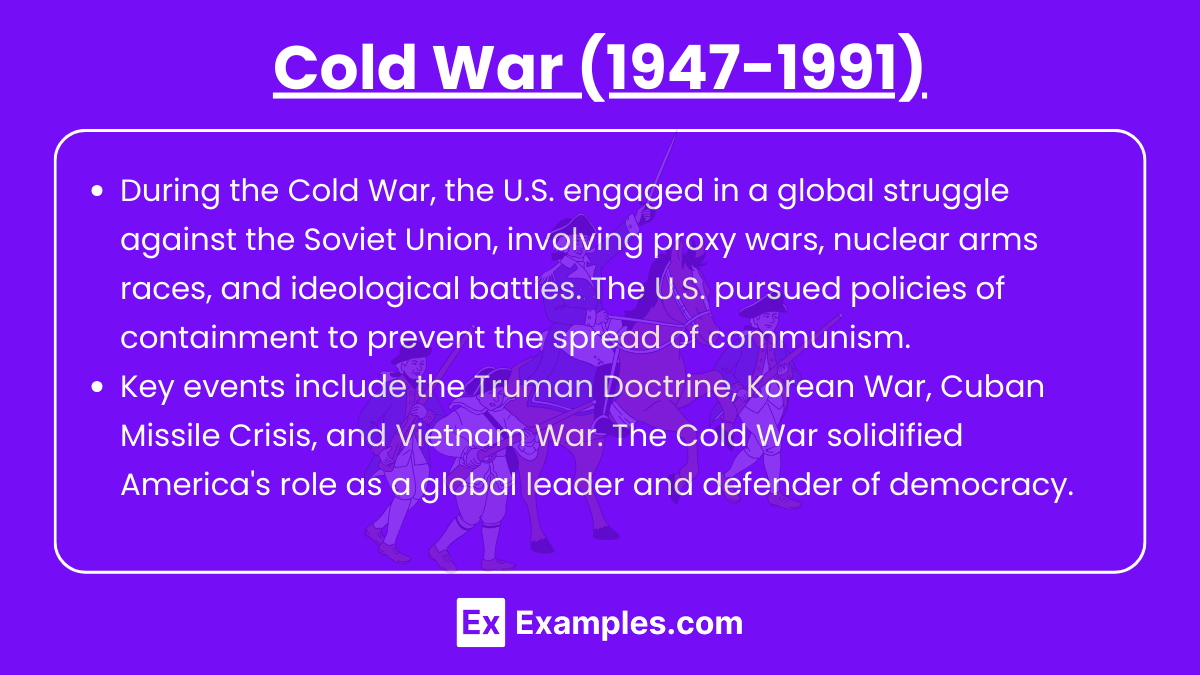
- During the Cold War, the U.S. engaged in a global struggle against the Soviet Union, involving proxy wars, nuclear arms races, and ideological battles. The U.S. pursued policies of containment to prevent the spread of communism.
- Key events include the Truman Doctrine, Korean War, Cuban Missile Crisis, and Vietnam War. The Cold War solidified America’s role as a global leader and defender of democracy.
Post-Cold War Era
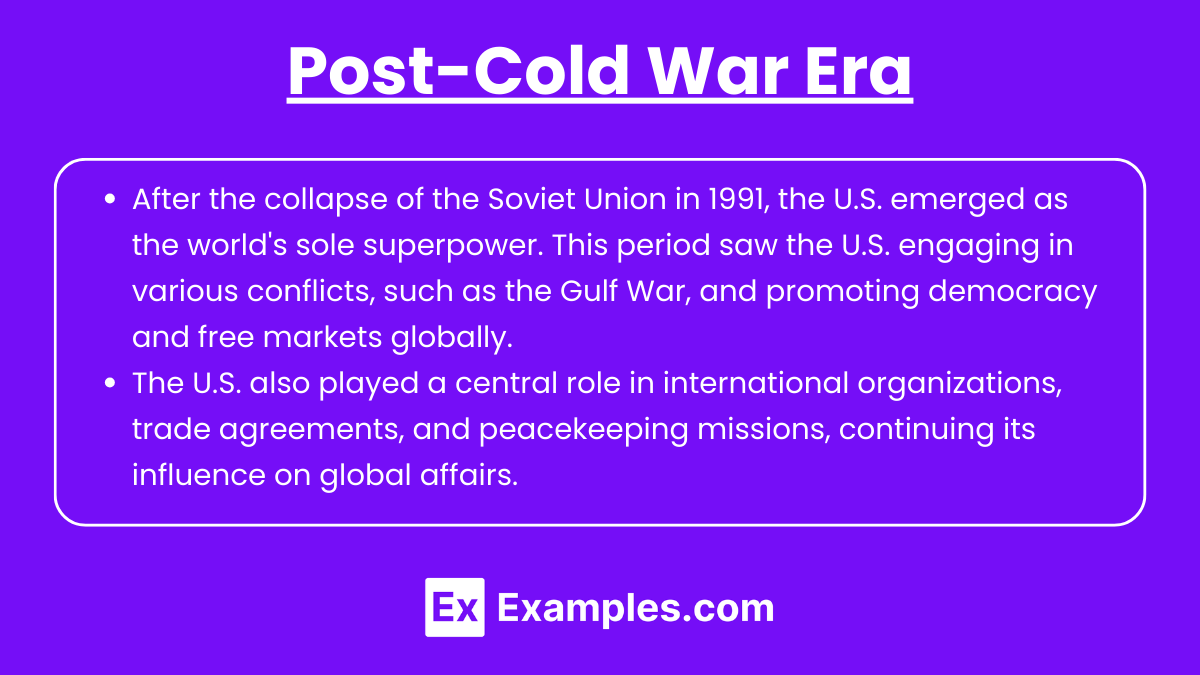
- After the collapse of the Soviet Union in 1991, the U.S. emerged as the world’s sole superpower. This period saw the U.S. engaging in various conflicts, such as the Gulf War, and promoting democracy and free markets globally.
- The U.S. also played a central role in international organizations, trade agreements, and peacekeeping missions, continuing its influence on global affairs.
Examples
Example 1: Spanish-American War Victory
The U.S. victory in the Spanish-American War marked the nation’s emergence as an imperial power, acquiring territories and demonstrating its military strength.
Example 2: Roosevelt Corollary in Latin America
The Roosevelt Corollary justified U.S. interventions in Latin America, such as in Panama and the Dominican Republic, establishing American dominance in the Western Hemisphere.
Example 3: U.S. Involvement in World War I
U.S. involvement in World War I marked a departure from isolationism, with America playing a crucial role in the Allied victory and the postwar peace process.
Example 4: Marshall Plan
The Marshall Plan provided economic aid to rebuild Western Europe after World War II, preventing the spread of communism and solidifying U.S. influence in Europe.
Example 5: Cuban Missile Crisis
The Cuban Missile Crisis was a defining moment in the Cold War, where U.S. diplomacy and military power averted nuclear conflict, showcasing America’s global leadership.
MCQs
What was the primary outcome of the Spanish-American War for the United States?
- A) Establishment of the League of Nations
- B) Acquisition of territories like Puerto Rico and the Philippines
- C) Creation of the United Nations
- D) Entry into World War I
Explanation: The U.S. emerged from the Spanish-American War as an imperial power, acquiring territories such as Puerto Rico, Guam, and the Philippines, marking its expansion into global affairs.
Which policy is associated with U.S. intervention in Latin America during the early 20th century?
- A) Truman Doctrine
- B) Marshall Plan
- C) Roosevelt Corollary
- D) Monroe Doctrine
Explanation: The Roosevelt Corollary to the Monroe Doctrine asserted the U.S. right to intervene in Latin American nations to maintain stability, expanding America’s influence in the region.
What role did the United States play in World War II?
- A) Neutral observer
- B) Defensive power only
- C) Key player in the Allied victory and postwar rebuilding
- D) Initiator of the conflict
Explanation: The U.S. played a crucial role in the Allied victory in World War II and took the lead in rebuilding Europe and establishing the postwar global order, emerging as a superpower.

